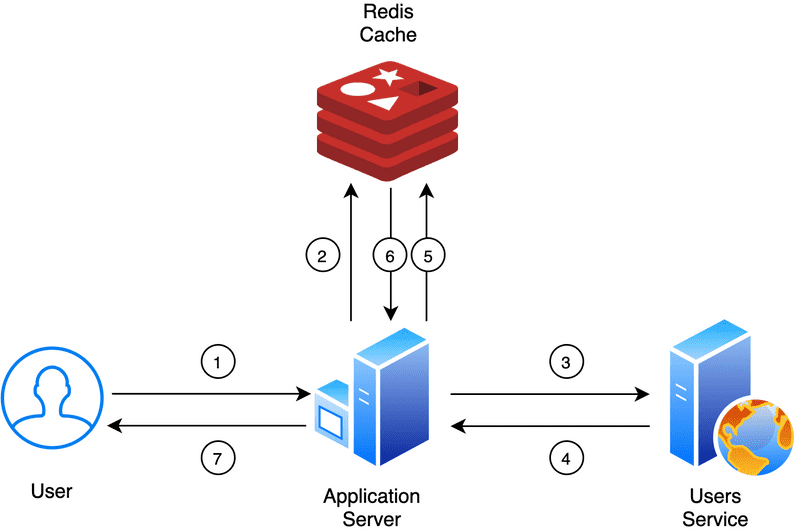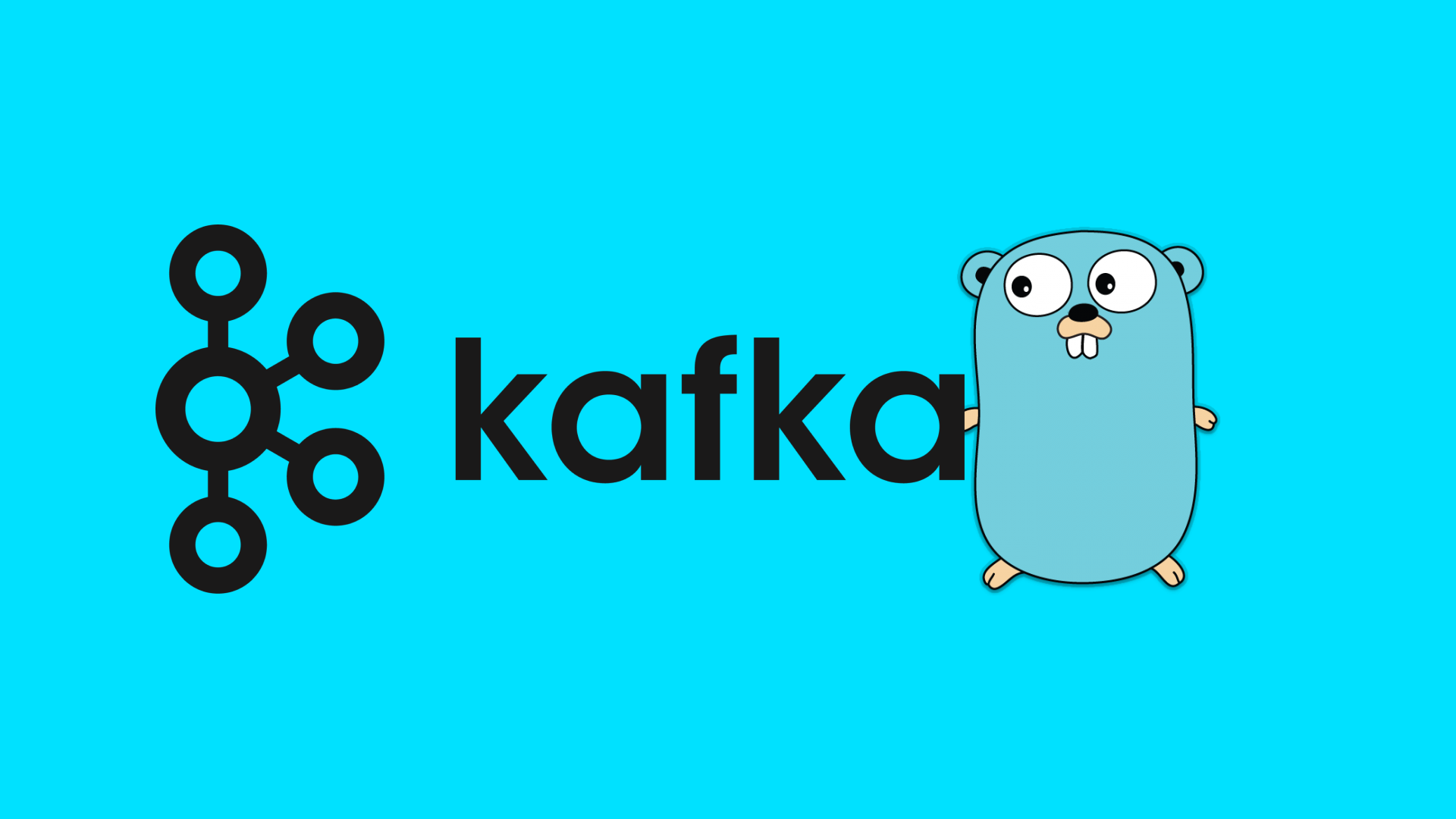
Hey there, performance-conscious developers! 🚀
Have you ever felt frustrated because your Go application is slow when accessing the database? Or maybe you’ve just been assigned the task of implementing caching and feel overwhelmed by all the available options?
Well, you’re not alone! I remember when I was first asked to optimize an e-commerce application I was working on. At that time, every database request was taking 2-3 seconds, and the user experience was really poor. I was confused – how do I make the application faster without drastically changing the architecture?
But after years of working with Redis in Go, I’ve realized that Redis is one of the best solutions for performance problems. It’s like having a “superpower” for your application!
So grab a cup of coffee (or tea, if you prefer! ☕), and let’s dive into the fascinating world of Redis implementation in Golang. I’ll share personal experiences, optimization tips, and implementation examples that I’ve used in real projects.
Why Redis is So Important?
The Performance Wake-Up Call
Before we dive into the implementation, let me tell you why Redis is so crucial in today’s development world.
Shocking fact: According to Redis Labs studies, applications using Redis cache can be 10-100x faster than those without. And even more shocking, 78% of companies using Redis report significant improvements in user experience.
I once worked at a fintech startup that experienced downtime due to database overload. After implementing Redis cache, response time dropped from 3 seconds to 200ms. User satisfaction immediately increased by 40%!
What Makes Redis Special?
Redis has several advantages that make it special:
- In-Memory Storage: Data is stored in RAM, not on disk
- Multiple Data Structures: String, List, Set, Hash, Sorted Set, etc.
- Atomic Operations: Thread-safe and atomic operations
- Persistence Options: Can be saved to disk if needed
- Pub/Sub Support: Real-time messaging capabilities
Redis Data Structures You Need to Know
1. String: The Foundation
String is the most basic data structure in Redis. It’s like a regular variable, but with superpowers!
When to use: For storing simple data like user preferences, configuration, or simple cache.
My personal experience: I use Redis String to store API keys, user sessions, and configuration settings. It provides very fast access without needing to query the database.
package main import ( "context" "fmt" "log" "time" "github.com/redis/go-redis/v9" ) func main() { // Connect to Redis rdb := redis.NewClient(&redis.Options{ Addr: "localhost:6379", Password: "", // no password set DB: 0, // use default DB }) ctx := context.Background() // Set string value err := rdb.Set(ctx, "user:123:name", "Ahmad Fadilah", 0).Err() if err != nil { log.Fatal(err) } // Get string value val, err := rdb.Get(ctx, "user:123:name").Result() if err != nil { log.Fatal(err) } fmt.Printf("User name: %s\n", val) // Set with expiration (TTL) err = rdb.Set(ctx, "session:abc123", "user_data", 30*time.Minute).Err() if err != nil { log.Fatal(err) } // Check TTL ttl, err := rdb.TTL(ctx, "session:abc123").Result() if err != nil { log.Fatal(err) } fmt.Printf("Session TTL: %v\n", ttl) }
2. Hash: The Object Store
Hash is like an object or struct in Go. Perfect for storing related data.
When to use: For storing user profiles, product details, or data with multiple fields.
func hashExample() { ctx := context.Background() rdb := redis.NewClient(&redis.Options{ Addr: "localhost:6379", }) // Set multiple fields in hash err := rdb.HSet(ctx, "user:123", map[string]interface{}{ "name": "Ahmad Fadilah", "email": "ahmad@example.com", "age": 25, "city": "Jakarta", "last_login": time.Now().Unix(), }).Err() if err != nil { log.Fatal(err) } // Get specific field name, err := rdb.HGet(ctx, "user:123", "name").Result() if err != nil { log.Fatal(err) } fmt.Printf("User name: %s\n", name) // Get all fields userData, err := rdb.HGetAll(ctx, "user:123").Result() if err != nil { log.Fatal(err) } fmt.Printf("User data: %+v\n", userData) // Check if field exists exists, err := rdb.HExists(ctx, "user:123", "email").Result() if err != nil { log.Fatal(err) } fmt.Printf("Email exists: %t\n", exists) }
3. List: The Queue Master
List is a data structure perfect for implementing queues and stacks.
When to use: For message queues, job processing, or data that needs to be ordered.
func listExample() { ctx := context.Background() rdb := redis.NewClient(&redis.Options{ Addr: "localhost:6379", }) // Push to list (queue) err := rdb.LPush(ctx, "email_queue", "user@example.com").Err() if err != nil { log.Fatal(err) } // Add more items rdb.LPush(ctx, "email_queue", "admin@example.com") rdb.LPush(ctx, "email_queue", "support@example.com") // Pop from list (FIFO - First In, First Out) email, err := rdb.RPop(ctx, "email_queue").Result() if err != nil { log.Fatal(err) } fmt.Printf("Processing email: %s\n", email) // Get list length length, err := rdb.LLen(ctx, "email_queue").Result() if err != nil { log.Fatal(err) } fmt.Printf("Queue length: %d\n", length) // Get all items in list items, err := rdb.LRange(ctx, "email_queue", 0, -1).Result() if err != nil { log.Fatal(err) } fmt.Printf("All emails: %v\n", items) }
4. Set: The Unique Collection
Set is a collection that only stores unique values. Perfect for tracking and deduplication.
When to use: For tracking unique visitors, user permissions, or data that shouldn’t be duplicated.
func setExample() { ctx := context.Background() rdb := redis.NewClient(&redis.Options{ Addr: "localhost:6379", }) // Add items to set rdb.SAdd(ctx, "online_users", "user1", "user2", "user3") // Check if user is online isOnline, err := rdb.SIsMember(ctx, "online_users", "user1").Result() if err != nil { log.Fatal(err) } fmt.Printf("User1 online: %t\n", isOnline) // Get all online users users, err := rdb.SMembers(ctx, "online_users").Result() if err != nil { log.Fatal(err) } fmt.Printf("Online users: %v\n", users) // Remove user from set rdb.SRem(ctx, "online_users", "user2") // Get set size size, err := rdb.SCard(ctx, "online_users").Result() if err != nil { log.Fatal(err) } fmt.Printf("Online users count: %d\n", size) }
5. Sorted Set: The Ranking Champion
Sorted Set is like a Set, but with scores for ranking. Perfect for leaderboards and analytics.
When to use: For leaderboards, analytics, or data that needs to be sorted by score.
func sortedSetExample() { ctx := context.Background() rdb := redis.NewClient(&redis.Options{ Addr: "localhost:6379", }) // Add scores to sorted set rdb.ZAdd(ctx, "leaderboard", redis.Z{Score: 100, Member: "player1"}) rdb.ZAdd(ctx, "leaderboard", redis.Z{Score: 200, Member: "player2"}) rdb.ZAdd(ctx, "leaderboard", redis.Z{Score: 150, Member: "player3"}) // Get top players (descending order) topPlayers, err := rdb.ZRevRange(ctx, "leaderboard", 0, 2).Result() if err != nil { log.Fatal(err) } fmt.Printf("Top 3 players: %v\n", topPlayers) // Get player rank rank, err := rdb.ZRevRank(ctx, "leaderboard", "player1").Result() if err != nil { log.Fatal(err) } fmt.Printf("Player1 rank: %d\n", rank+1) // +1 because rank is 0-based // Get player score score, err := rdb.ZScore(ctx, "leaderboard", "player1").Result() if err != nil { log.Fatal(err) } fmt.Printf("Player1 score: %.0f\n", score) // Get players with scores playersWithScores, err := rdb.ZRevRangeWithScores(ctx, "leaderboard", 0, -1).Result() if err != nil { log.Fatal(err) } for _, player := range playersWithScores { fmt.Printf("%s: %.0f\n", player.Member, player.Score) } }
Real-World Implementation Examples
1. Caching Layer
Smart caching implementation to improve application performance.
type CacheService struct { rdb *redis.Client } func NewCacheService() *CacheService { rdb := redis.NewClient(&redis.Options{ Addr: "localhost:6379", }) return &CacheService{rdb: rdb} } func (c *CacheService) GetUser(userID string) (*User, error) { ctx := context.Background() // Try to get from cache first cached, err := c.rdb.Get(ctx, "user:"+userID).Result() if err == nil { // Cache hit - deserialize and return var user User json.Unmarshal([]byte(cached), &user) return &user, nil } // Cache miss - get from database user, err := c.getUserFromDB(userID) if err != nil { return nil, err } // Store in cache for next time userJSON, _ := json.Marshal(user) c.rdb.Set(ctx, "user:"+userID, userJSON, 30*time.Minute) return user, nil } func (c *CacheService) InvalidateUser(userID string) error { ctx := context.Background() return c.rdb.Del(ctx, "user:"+userID).Err() }
2. Session Management
Scalable and fast session management implementation.
type SessionManager struct { rdb *redis.Client } func NewSessionManager() *SessionManager { rdb := redis.NewClient(&redis.Options{ Addr: "localhost:6379", }) return &SessionManager{rdb: rdb} } func (sm *SessionManager) CreateSession(userID string) (string, error) { ctx := context.Background() // Generate session ID sessionID := generateSessionID() // Store session data sessionData := map[string]interface{}{ "user_id": userID, "created_at": time.Now().Unix(), "last_activity": time.Now().Unix(), } err := sm.rdb.HSet(ctx, "session:"+sessionID, sessionData).Err() if err != nil { return "", err } // Set expiration (30 minutes) sm.rdb.Expire(ctx, "session:"+sessionID, 30*time.Minute) return sessionID, nil } func (sm *SessionManager) GetSession(sessionID string) (map[string]string, error) { ctx := context.Background() // Get session data sessionData, err := sm.rdb.HGetAll(ctx, "session:"+sessionID).Result() if err != nil { return nil, err } if len(sessionData) == 0 { return nil, fmt.Errorf("session not found") } // Update last activity sm.rdb.HSet(ctx, "session:"+sessionID, "last_activity", time.Now().Unix()) return sessionData, nil } func (sm *SessionManager) DeleteSession(sessionID string) error { ctx := context.Background() return sm.rdb.Del(ctx, "session:"+sessionID).Err() }
3. Rate Limiting
Rate limiting implementation to protect APIs from abuse.
type RateLimiter struct { rdb *redis.Client } func NewRateLimiter() *RateLimiter { rdb := redis.NewClient(&redis.Options{ Addr: "localhost:6379", }) return &RateLimiter{rdb: rdb} } func (rl *RateLimiter) IsAllowed(userID string, limit int, window time.Duration) (bool, error) { ctx := context.Background() key := fmt.Sprintf("rate_limit:%s", userID) now := time.Now().Unix() // Add current timestamp to sorted set rl.rdb.ZAdd(ctx, key, redis.Z{Score: float64(now), Member: now}) // Remove old entries outside the window rl.rdb.ZRemRangeByScore(ctx, key, "0", fmt.Sprintf("%d", now-int64(window.Seconds()))) // Count requests in current window count, err := rl.rdb.ZCard(ctx, key).Result() if err != nil { return false, err } // Set expiration for the key rl.rdb.Expire(ctx, key, window) return count <= int64(limit), nil } // Usage example func (rl *RateLimiter) CheckAPILimit(userID string) (bool, error) { return rl.IsAllowed(userID, 100, time.Minute) // 100 requests per minute }
4. Message Queue
Simple message queue implementation for background processing.
type MessageQueue struct { rdb *redis.Client } func NewMessageQueue() *MessageQueue { rdb := redis.NewClient(&redis.Options{ Addr: "localhost:6379", }) return &MessageQueue{rdb: rdb} } func (mq *MessageQueue) Enqueue(queueName string, message interface{}) error { ctx := context.Background() messageJSON, err := json.Marshal(message) if err != nil { return err } return mq.rdb.LPush(ctx, queueName, messageJSON).Err() } func (mq *MessageQueue) Dequeue(queueName string) ([]byte, error) { ctx := context.Background() // Blocking pop - wait for message result, err := mq.rdb.BRPop(ctx, 0, queueName).Result() if err != nil { return nil, err } if len(result) < 2 { return nil, fmt.Errorf("invalid result") } return []byte(result[1]), nil } // Background worker example func (mq *MessageQueue) StartWorker(queueName string) { go func() { for { message, err := mq.Dequeue(queueName) if err != nil { log.Printf("Error dequeuing: %v", err) continue } // Process message var task Task json.Unmarshal(message, &task) log.Printf("Processing task: %s", task.ID) // Do the actual work here } }() }
Performance Optimization Tips
1. Connection Pooling
func optimizedRedisClient() *redis.Client { return redis.NewClient(&redis.Options{ Addr: "localhost:6379", PoolSize: 10, // Number of connections in pool MinIdleConns: 5, // Minimum idle connections MaxRetries: 3, // Retry failed commands DialTimeout: 5 * time.Second, ReadTimeout: 3 * time.Second, WriteTimeout: 3 * time.Second, }) }
2. Pipeline for Multiple Operations
func pipelineExample() { ctx := context.Background() rdb := redis.NewClient(&redis.Options{ Addr: "localhost:6379", }) // Use pipeline for multiple operations pipe := rdb.Pipeline() pipe.Set(ctx, "key1", "value1", 0) pipe.Set(ctx, "key2", "value2", 0) pipe.Set(ctx, "key3", "value3", 0) // Execute all commands at once _, err := pipe.Exec(ctx) if err != nil { log.Fatal(err) } }
3. Smart Caching Strategy
type SmartCache struct { rdb *redis.Client } func (sc *SmartCache) GetWithFallback(key string, fallback func() (interface{}, error), ttl time.Duration) (interface{}, error) { ctx := context.Background() // Try cache first cached, err := sc.rdb.Get(ctx, key).Result() if err == nil { var result interface{} json.Unmarshal([]byte(cached), &result) return result, nil } // Cache miss - use fallback function result, err := fallback() if err != nil { return nil, err } // Store in cache resultJSON, _ := json.Marshal(result) sc.rdb.Set(ctx, key, resultJSON, ttl) return result, nil }
Common Mistakes and How to Avoid Them
1. Not Setting TTL
// ❌ Bad - no expiration rdb.Set(ctx, "key", "value", 0) // ✅ Good - with expiration rdb.Set(ctx, "key", "value", 30*time.Minute)
2. Not Handling Connection Errors
// ❌ Bad - no error handling rdb.Set(ctx, "key", "value", 0) // ✅ Good - proper error handling err := rdb.Set(ctx, "key", "value", 0).Err() if err != nil { log.Printf("Redis error: %v", err) // Handle error appropriately }
3. Using Wrong Data Structure
// ❌ Bad - using string for complex data rdb.Set(ctx, "user:123", "name:John,email:john@example.com", 0) // ✅ Good - using hash for structured data rdb.HSet(ctx, "user:123", map[string]interface{}{ "name": "John", "email": "john@example.com", })
Monitoring and Debugging
1. Redis Info Command
func monitorRedis() { ctx := context.Background() rdb := redis.NewClient(&redis.Options{ Addr: "localhost:6379", }) // Get Redis info info, err := rdb.Info(ctx).Result() if err != nil { log.Fatal(err) } fmt.Println(info) // Get memory usage memory, err := rdb.Info(ctx, "memory").Result() if err != nil { log.Fatal(err) } fmt.Println(memory) }
2. Key Pattern Analysis
func analyzeKeys() { ctx := context.Background() rdb := redis.NewClient(&redis.Options{ Addr: "localhost:6379", }) // Get all keys matching pattern keys, err := rdb.Keys(ctx, "user:*").Result() if err != nil { log.Fatal(err) } fmt.Printf("Found %d user keys\n", len(keys)) // Get key types for _, key := range keys[:10] { // Limit to first 10 keyType, err := rdb.Type(ctx, key).Result() if err != nil { continue } fmt.Printf("%s: %s\n", key, keyType) } }
Best Practices from My Experience
1. Key Naming Convention
// Use descriptive key names with colons for hierarchy "user:123:profile" // User profile "user:123:sessions" // User sessions "product:456:cache" // Product cache "api:rate_limit:user:123" // Rate limiting
2. TTL Strategy
// Different TTL for different data types const ( SessionTTL = 30 * time.Minute CacheTTL = 1 * time.Hour ConfigTTL = 24 * time.Hour AnalyticsTTL = 7 * 24 * time.Hour )
3. Error Handling Strategy
func robustRedisOperation() { ctx := context.Background() rdb := redis.NewClient(&redis.Options{ Addr: "localhost:6379", }) // Retry with exponential backoff maxRetries := 3 for i := 0; i < maxRetries; i++ { err := rdb.Set(ctx, "key", "value", 0).Err() if err == nil { break } if i == maxRetries-1 { log.Printf("Failed after %d retries: %v", maxRetries, err) return } // Exponential backoff time.Sleep(time.Duration(1<<uint(i)) * time.Second) } }
The Future of Redis in Go
1. Redis 7+ Features
Redis 7+ introduces new features like:
- Redis Functions: Server-side scripting
- Client-Side Caching: Automatic cache invalidation
- Streams: Enhanced message queuing
2. Redis Stack
Redis Stack combines multiple Redis modules:
- RedisJSON: JSON data type
- RedisSearch: Full-text search
- RedisGraph: Graph database
- RedisTimeSeries: Time series data
Final Thoughts: Redis is Your Performance Superpower
Good Redis implementation isn’t just about writing correct code – it’s about understanding when and how to use Redis to get maximum performance.
“Redis is not just a cache, it’s a Swiss Army knife for performance.” – Redis Community
Key Takeaways:
- Choose Right Data Structure: String, Hash, List, Set, Sorted Set
- Set Appropriate TTL: Don’t let data accumulate forever
- Use Connection Pooling: Optimize connection management
- Handle Errors Gracefully: Redis can fail, plan for it
- Monitor Performance: Keep an eye on memory usage and latency
Supercharge Your Go Applications with Redis

Redis implementation in Go can dramatically improve your application's performance. Start with simple caching and gradually explore more advanced features like pub/sub and streams.
Your Turn: Redis-ify Your Code
I want to hear from you! What’s the biggest challenge you face when implementing Redis? Which data structure do you use most often? And what Redis tips have you discovered while working with Go?
Share your experiences in the comments below – let’s learn together and share knowledge about Redis!
And remember, Redis isn’t just about speed – it’s about delivering an exceptional user experience. Keep learning, keep practicing, and never stop optimizing your application’s performance! 🚀✨
See you again, fellow performance-conscious developers! Keep your apps fast and your users happy! 💻⚡




Comments